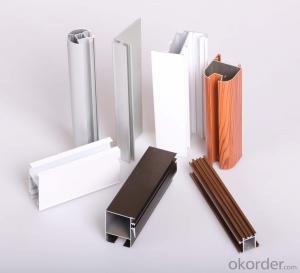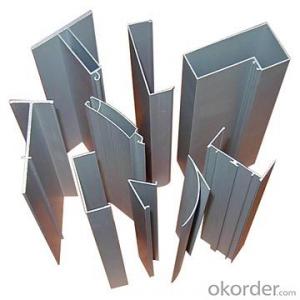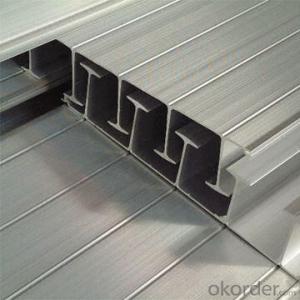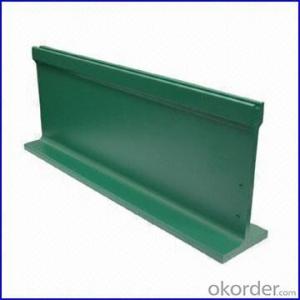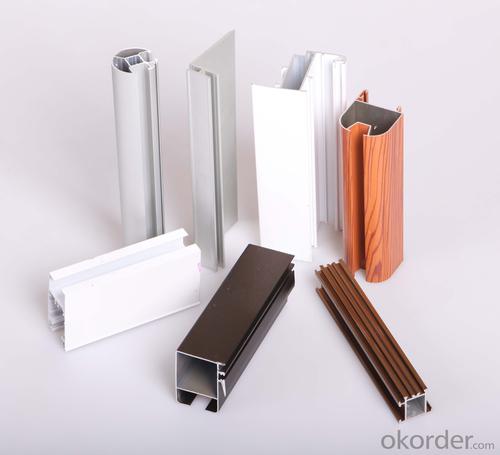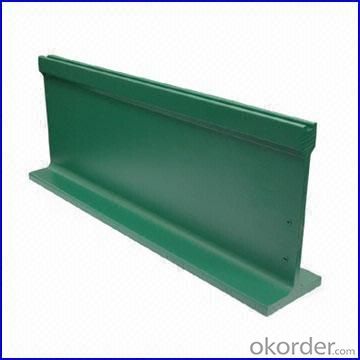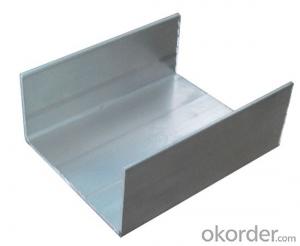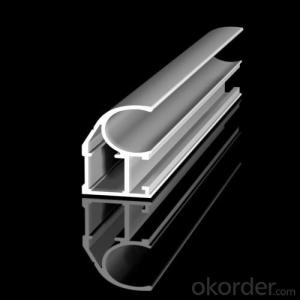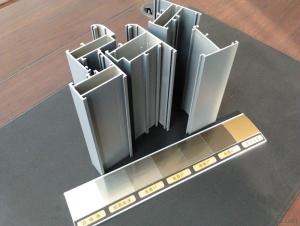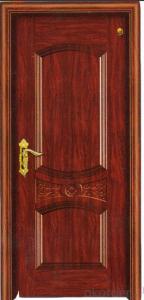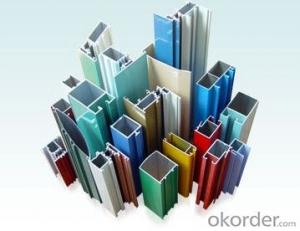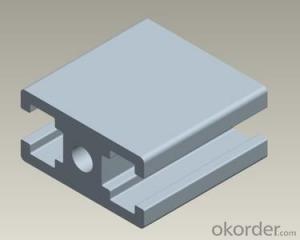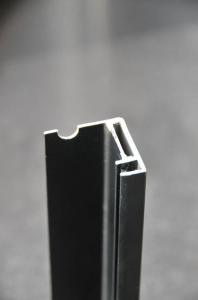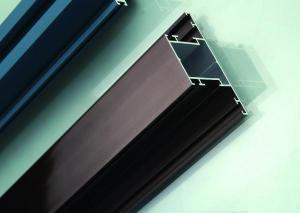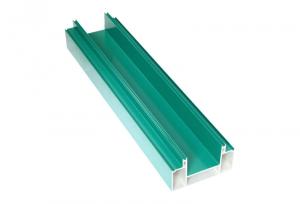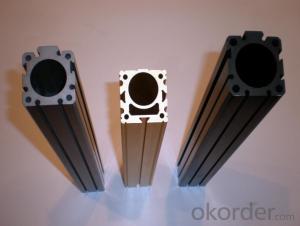Aluminum Profiles for Exhibition Stands, Windows, and Doors
- Loading Port:
- China Main Port
- Payment Terms:
- TT OR LC
- Min Order Qty:
- -
- Supply Capability:
- -
OKorder Service Pledge
OKorder Financial Service
You Might Also Like
Aluminium is a relatively soft, durable, lightweight, ductileand malleablemetalwith appearance ranging from silvery to dull gray, depending on the surfaceroughness. It is nonmagnetic and does not easily ignite. A fresh film ofaluminium serves as a good reflector (approximately 92%) of visible lightand an excellent reflector (as much as 98%) of medium and far infraredradiation. The yield strength of pure aluminium is 7–11 MPa,while aluminium alloys have yield strengths ranging from200 MPa to 600 MPa. Aluminium has about one-third the densityand stiffness of steel. It is easily machined,cast, drawn and extruded.
Features:
Material | Alloy 6063,6061,6005or according to customer’s choice |
Temper | T3, T4, T5, T6 |
Surface | Anodize, electrophoresis, powder coating, PVDF coating, wood grain painting, matted, etc. |
Length | Coating 6.5 meters, Anodizing 6.5 meters, Mill finish 5 meters |
Application | Industrial, electrical equipment(TV set, air conditioner, refrigerator, computer), decoration,construction, transportation |
Custom Made | We can package following with customer's request. |
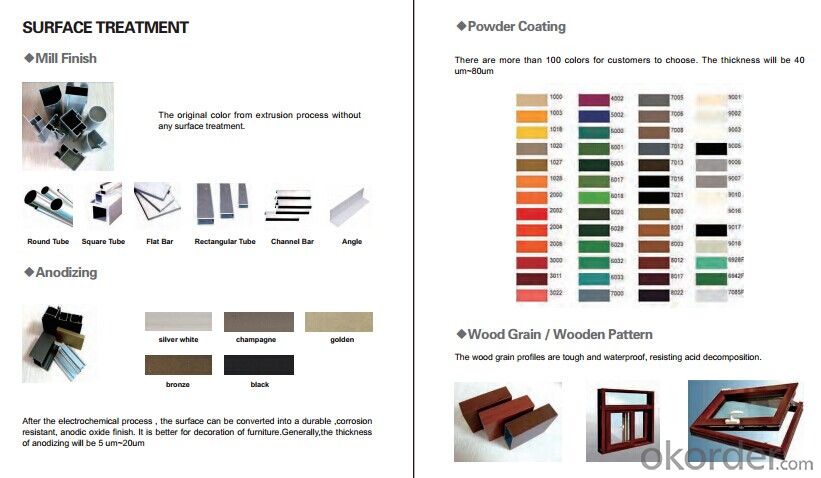
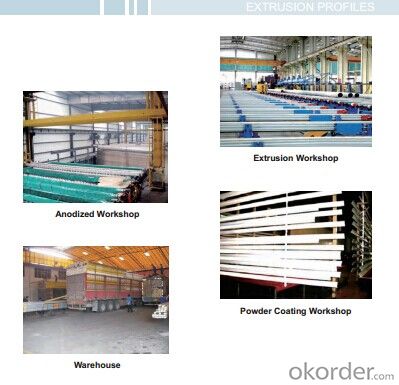

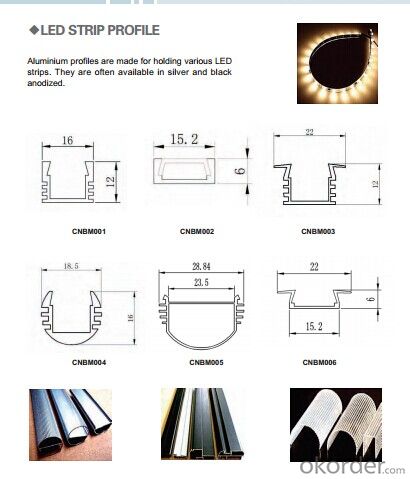
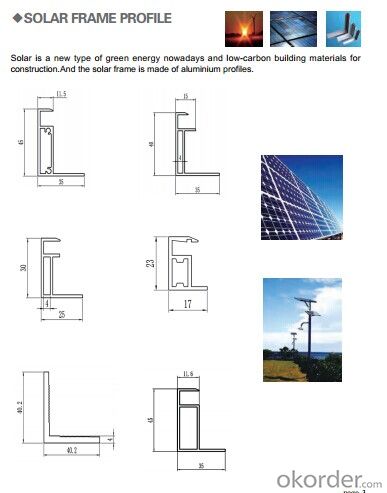

- Q: This question asks about the strength and suitability of aluminum profiles for outdoor applications.
- <p>Yes, aluminum profiles are strong enough for exterior use. They are lightweight, durable, and resistant to corrosion, making them ideal for outdoor applications. Aluminum profiles can withstand various weather conditions and maintain their strength over time. They are also low-maintenance, as they do not rust or rot, and can be easily cleaned. Additionally, aluminum profiles can be anodized or powder-coated for enhanced durability and resistance to UV rays, further ensuring their suitability for exterior use.</p>
- Q: How do aluminum profiles provide structural stability?
- Aluminum profiles provide structural stability through their inherent properties such as high strength-to-weight ratio and excellent corrosion resistance. These profiles are designed to distribute and withstand loads efficiently, ensuring the structural integrity of various applications. Additionally, their versatility allows for customization and integration with other materials, further enhancing stability in different environments and industries.
- Q: Are aluminum profiles suitable for use in roofing systems in areas with high wind conditions?
- <p>Yes, aluminum profiles can be used for roofing systems in windy regions. Aluminum is a lightweight and durable material that can withstand high winds. It is often used in the construction of roofing systems because of its strength and resistance to corrosion. Additionally, aluminum profiles can be designed to meet specific wind load requirements, making them suitable for areas prone to strong winds. However, the design and installation of the roofing system must be done correctly to ensure it can handle the wind forces.</p>
- Q: Can aluminum profiles be used in railway and transportation infrastructure?
- Yes, aluminum profiles can be used in railway and transportation infrastructure. Aluminum is a lightweight and durable material that offers excellent strength-to-weight ratio, corrosion resistance, and easy fabrication. It can be used in the construction of train bodies, windows, doors, and various structural components. Additionally, aluminum profiles are recyclable, making them environmentally friendly and cost-effective for transportation projects.
- Q: This question asks for the method to determine the quantity of aluminum profiles required for a construction project.
- <p>To calculate the amount of aluminum profiles needed for a building project, follow these steps: 1. Determine the architectural design and specifications of the project to understand where aluminum profiles will be used. 2. Measure the dimensions of the areas requiring aluminum profiles, such as window frames, door frames, or structural supports. 3. Calculate the total linear footage of aluminum needed by multiplying the length of each profile by the number of profiles required. 4. Factor in additional materials for joints, connections, and potential waste. 5. Consult with suppliers or use industry-standard conversion factors to determine the weight or volume of aluminum profiles based on the linear footage. 6. Review the calculations and adjust for any changes in the project design. This process ensures you have the correct amount of aluminum profiles for your construction needs.</p>
- Q: This question asks whether aluminum profiles can be utilized for creating interior partitions and seeks reasons for their suitability.
- <p>Yes, aluminum profiles can be used for interior partitions. They are favored for several reasons: they are lightweight yet strong, offering durability and stability. Aluminum profiles are also resistant to corrosion, which makes them suitable for various environments. Their ease of installation and low maintenance requirements make them cost-effective. Additionally, they can be easily customized to fit various design needs, and their recyclability makes them an environmentally friendly choice.</p>
- Q: Can aluminum profiles be used for stadium seating?
- Yes, aluminum profiles can be used for stadium seating. Aluminum profiles offer numerous advantages for stadium seating, making them a popular choice in modern stadium construction. Firstly, aluminum profiles are lightweight, which makes them easier to install and transport. This allows for faster construction times and reduces the overall weight load on the stadium structure. Secondly, aluminum profiles are highly durable and resistant to corrosion, making them suitable for outdoor applications where the seating is exposed to various weather conditions. This ensures that the stadium seating will remain in good condition for a longer time, reducing the need for frequent repairs or replacements. Additionally, aluminum profiles can be easily customized and fabricated into different shapes and sizes to meet the specific design requirements of the stadium. This flexibility allows for the creation of unique seating arrangements and configurations to optimize the spectator experience. Furthermore, aluminum profiles offer excellent strength-to-weight ratio, providing structural stability and support for the seating. This ensures the safety and comfort of spectators during events. In conclusion, aluminum profiles are a versatile and practical choice for stadium seating due to their lightweight nature, durability, customization options, and strength. They offer numerous benefits that contribute to the overall success and functionality of a stadium seating system.
- Q: This question asks for methods to guarantee the quality and reliability of purchased aluminum profiles.
- <p>To ensure the quality and reliability of aluminum profiles, first, check the supplier's reputation and certifications. Request third-party quality certifications such as ISO 9001. Inspect the profiles for uniformity in thickness and straightness. Look for any defects like cracks or inclusions. Test the hardness and strength of the aluminum. Ensure the profiles meet the required specifications for your application. Request samples for testing before bulk purchase. Lastly, consider the supplier's after-sales service and warranty policies.</p>
- Q: How do aluminum profiles perform in blast-resistant structures?
- Due to their exceptional performance characteristics, aluminum profiles find wide application in blast-resistant structures. These profiles possess several advantages that render them suitable for such purposes. To begin with, aluminum profiles offer an excellent strength-to-weight ratio, enabling them to provide high structural integrity while maintaining a relatively low overall weight. This plays a crucial role in blast-resistant structures by minimizing explosion impact and potential damage. Additionally, aluminum profiles exhibit remarkable corrosion resistance, ensuring their durability in harsh environments. This becomes particularly significant in blast-resistant structures, where exposure to intense pressure waves, debris, and extreme temperatures may occur during an explosion. Moreover, aluminum profiles possess excellent energy absorption capabilities, effectively dissipating and absorbing blast-generated energy. Consequently, this reduces the impact on the structure and enhances its overall blast resistance. Such a feature plays a vital role in safeguarding occupants and preventing structural failure. Furthermore, aluminum profiles offer exceptional design flexibility, allowing architects and engineers to construct complex and innovative structures. This versatility empowers the creation of blast-resistant structures tailored to specific requirements and design constraints. In conclusion, aluminum profiles excel in blast-resistant structures due to their high strength-to-weight ratio, corrosion resistance, energy absorption capabilities, and design flexibility. These qualities establish them as the preferred choice for architects and engineers when designing structures capable of withstanding the forces generated by an explosion.
- Q: Can aluminum profiles be used in the production of transportation containers?
- Yes, aluminum profiles can be used in the production of transportation containers. Aluminum is a lightweight and durable material that is commonly used in the manufacturing industry. It offers excellent strength-to-weight ratio, corrosion resistance, and can withstand harsh environmental conditions, making it suitable for transportation containers. Additionally, aluminum profiles can be easily shaped and welded, allowing for customization and efficient production.
Send your message to us
Aluminum Profiles for Exhibition Stands, Windows, and Doors
- Loading Port:
- China Main Port
- Payment Terms:
- TT OR LC
- Min Order Qty:
- -
- Supply Capability:
- -
OKorder Service Pledge
OKorder Financial Service
Similar products
Hot products
Hot Searches
Related keywords
